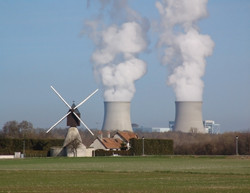Blueprint for Europe's next-era reactor
Nuclear energy has life-cycle carbon emissions similar to wind and geothermal power, and eliminates the geopolitical influences negatively affecting reliability and cost. The EU nuclear community and its Sustainable Nuclear Energy Technology Platform (SNETP) have established a roadmap for development where sodium fast reactor (SFR) technology plays a key role. A European sodium fast reactor (ESFR) is slated for deployment around 2040, with a demonstrator operating sometime between 2020 and 2025. The EU-funded 'Collaborative Project on European sodium fast reactor' (CP-ESFR)(opens in new window) organised and conducted an important part of the research and development effort identified in the roadmap. Work covered the technical aspects involved in optimising the reactor architecture, and the fuels and fuel cycles. The technical work fell under an umbrella of improved safety, decreased financial risk, and effective management of nuclear materials to minimise environmental impact and proliferation. Scientists addressed all issues laid out in the original project proposal and, along the way, made a major contribution to bringing European expertise on SFRs up to date. Identification of a new core design promises enhanced safety and capabilities for transmutation. The latter is a key pillar of modern nuclear energy programmes. Long-term sources of radioactivity are converted into stable or short-lived (less than 30 years) materials, reducing hazards to people and the environment. The team delivered approximately 100 reports highlighting core and reactor designs, main reactor components and fluids, and safety solutions. The current state of the art in terms of codes and standards was also addressed to ensure that development work responded to the present or anticipated future regulatory framework. CP-ESFR has made an important contribution to the EU's SNETP with an ESFR that takes into account the EU technology landscape and specificities. Emphasis on safety, efficiency and cost effectiveness should lead to a socially acceptable European version and widespread support of this sustainable and eco-friendly alternative to fossil fuel combustion.







